The Dome of the Rock is an ancient Islamic shrine in Jerusalem. It is one of the oldest and most sacred sites for Muslims and Jews. The Umayyad Caliph Abd al-Malik built the Dome of the Rock in the late 7th century CE. It is believed to be the place where the prophet Muhammad ascended to heaven and where Abraham was ready to sacrifice his son. The structure of the Dome of the Rock is based on the Byzantine architectural tradition. It has an octagonal shape, a large dome, and a circular platform. The exterior walls are covered with marble and glazed tiles, while the interior is decorated with mosaics and inscriptions. The dome is made of wood and covered with gold. The most prominent feature of the shrine is the rock at its center, which is exposed and surrounded by a railing. The Dome of the Rock is located on the Temple Mount, also known as Al-Aqsa, in the Old City of Jerusalem. It is a complex with several mosques, buildings, and gardens. Dome of the Rock is not a mosque but a place of pilgrimage and prayer. It is open to visitors of all faiths, except on Fridays and Muslim holidays. The entrance fee is $11 (€10.01, £9.57). The Dome of the Rock is a remarkable Islamic art and architecture example. It is also a symbol of the religious and historical significance of Jerusalem. The dome is a UNESCO World Heritage Site and a popular tourist attraction. It offers a panoramic view of the city and a glimpse into the region’s rich and diverse cultural heritage.
What is the Dome of the Rock?
The Dome of the Rock is an Islamic shrine in Al-Aqsa, Jerusalem. It is the world’s oldest surviving work of Islamic architecture and holds great religious significance. The dome is at the center of the mosque compound on the Temple Mount, within the Old City of Jerusalem. The Dome of the Rock was built between 688 and 692 CE during the Umayyad Caliphate. It was initially constructed by order of Caliph Abd al-Malik, the ruler of the Umayyad Caliphate at the time. His son, al-Walid, supervised the construction, and the project employed skilled workers from different regions of the caliphate. The architecture and mosaics of the dome were influenced by nearby Byzantine churches and palaces. The Dome of the Rock has a dome with a diameter of 66 feet (20 meters) and a height of 67 feet (20.5 meters). It is an octagonal structure with outer walls measuring 60 feet (18 meters) in width and 36 feet (11 meters) in height. The dome is supported by 16 columns and rests on an elevated circular platform.
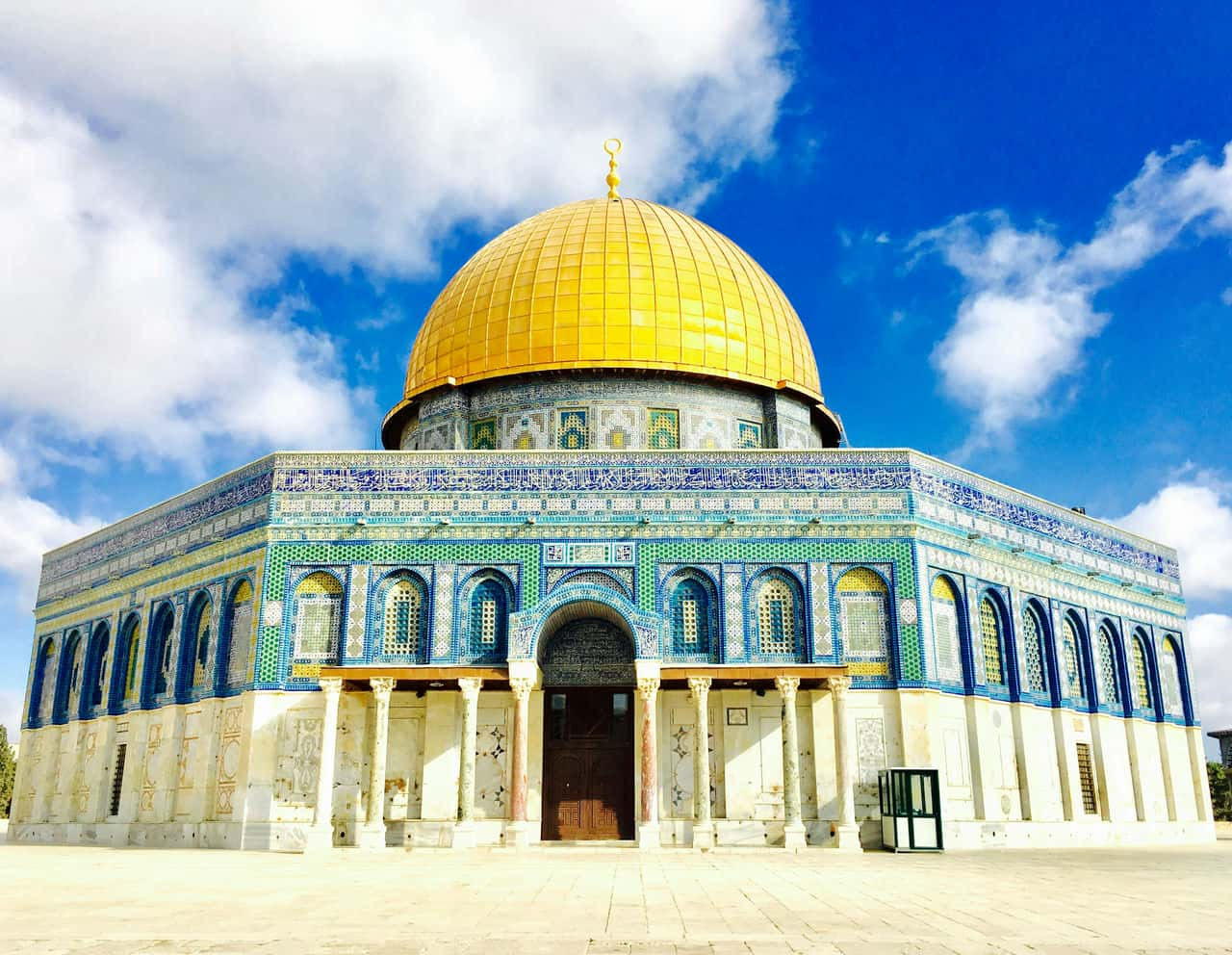
What architectural style is most prominent in the Dome of the Rock?
The Dome of the Rock exhibits a combination of elements from Byzantine, Umayyad, and Islamic architectural traditions. The structure’s design and decoration blend Byzantine and Islamic artistry, creating a unique and distinct architectural identity. The octagonal shape of the Dome of the Rock and its decorative elements, such as the arcades and mosaics, draw inspiration from Byzantine architecture. Byzantine churches and palaces in the region, such as the Church of the Holy Sepulchre, influenced the dome’s design. The intricate mosaics containing the interior walls reflect Byzantine artistic techniques and motifs. The Dome of the Rock incorporates elements of the Umayyad architectural style. It can be seen in the use of geometric patterns, elevated platforms, and the overall grandeur of the structure. The Umayyad Caliphate, known for its architectural achievements, played a significant role in shaping the design and construction of the dome. Islamic architectural influences are evident in the Dome of the Rock. The dome’s prominent position within the mosque compound and its incorporation of Islamic calligraphy and inscriptions are characteristic of Islamic architecture. The inscriptions contain verses from the Quran and Islamic proclamations, emphasizing the site’s religious significance.
What structural engineering principles are employed in the construction of the Dome of the Rock?
There are 4 major structural engineering principles that are employed in the construction of the Dome of the Rock. Firstly, the dome’s structural stability is achieved through the innovative use of a double-shelled system. The inner and outer shells of the dome work together to distribute the weight and provide structural support. The inner circular drum and the outer walls create an inner and outer ambulatory, forming a stable and self-supporting structure. Secondly, the dome utilizes a system of arches and piers to distribute the load evenly and strengthen the overall structure. The octagonal arcade, consisting of 24 piers and columns surrounding the central circular drum, provides additional support and stability. The architectural arrangement effectively transfers the dome’s weight to the supporting columns and prevents excessive stress on any particular area. Thirdly, the dome’s construction incorporates sturdy materials and construction techniques. The dome is made of a timber framework covered with lead sheets, which provide a lightweight yet durable roofing solution. The walls are constructed using thick stone masonry, ensuring the stability and strength of the overall structure. Lastly, the dome’s design accounts for seismic activity and environmental conditions. The dome’s octagonal shape and multiple supports help distribute the forces caused by earthquakes and minimize potential damage. The exterior walls contain numerous windows, allowing for natural ventilation and reducing the impact of wind pressure on the structure.
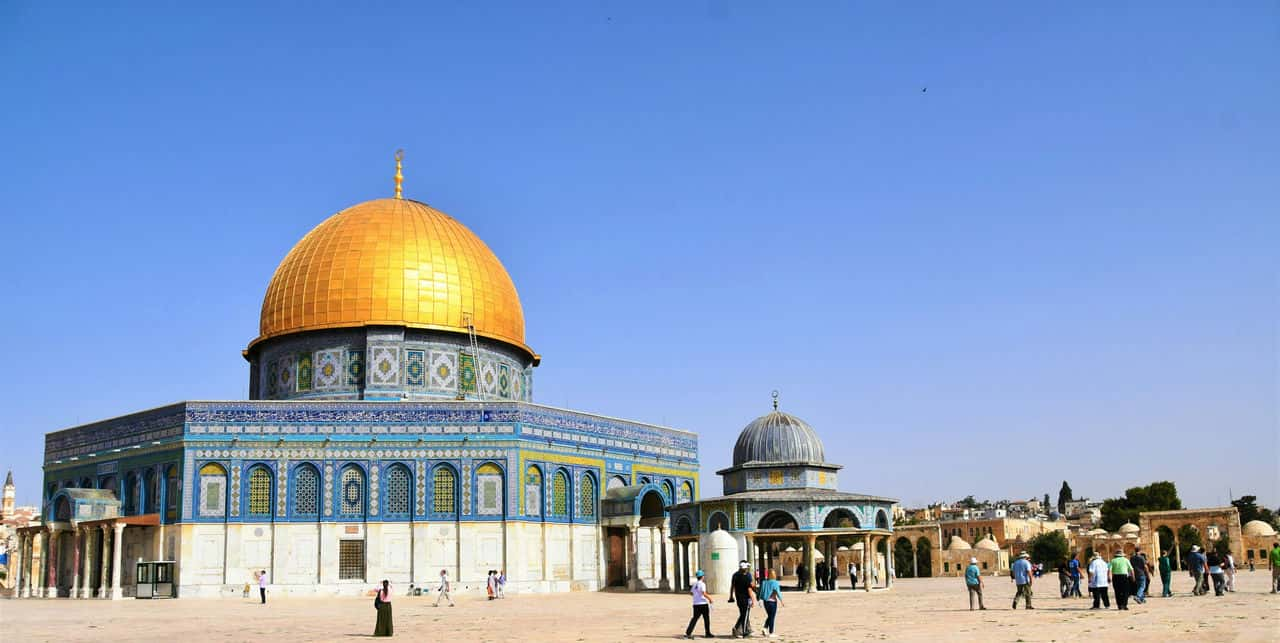
Who designed the Dome of the Rock?
The Dome of the Rock was designed by Raja ibn Haywah, whom Caliph Abd al-Malik appointed. Raja ibn Haywah played a crucial role in shaping the architectural vision and overseeing the construction of the iconic Islamic shrine in Jerusalem. Under the patronage of Caliph Abd al-Malik, Raja ibn Haywah executed the design and supervised the construction of the Dome of the Rock. His architectural planning and engineering expertise allowed him to bring the caliph’s vision to life. He collaborated with skilled craftsmen and artisans from different regions of the Umayyad Caliphate to realize the dome’s intricate architectural details and decorative elements. Raja ibn Haywah’s design of the Dome of the Rock reflects a fusion of various architectural influences, including Byzantine and Islamic styles. The incorporation of Byzantine elements, such as the octagonal shape and the use of columns, showcases his ability to blend different architectural traditions. His design choices successfully created a grand and harmonious structure that has stood the test of time and continues to be revered as a masterpiece of Islamic architecture.
What are the historical design influences visible in the Dome of the Rock?
There are 4 major historical design influences visible in the Dome of the Rock. Firstly, Byzantine architectural influences are prominent in the design of the Dome of the Rock. The octagonal shape of the dome can be traced back to Byzantine architectural traditions, particularly seen in Byzantine churches and baptisteries. Columns, arcades, and decorative mosaics also reflect Byzantine design elements. These influences highlight the cultural exchange and cross-pollination of ideas between the Byzantine Empire and the Umayyad Caliphate during construction. Secondly, Persian and Sassanian artistic traditions have influenced the decorative elements of the Dome of the Rock. The intricate mosaics, featuring geometric patterns and floral motifs, draw inspiration from Persian art. The influence can be attributed to the cultural interactions and artistic exchanges between the Umayyad Caliphate and the Persian Sassanian Empire during construction. The dome’s mosaics exemplify the fusion of Persian and Islamic artistic styles. Thirdly, Islamic design influences are evident in the calligraphy and inscriptions adorning the exterior and interior walls of the dome. Arabic calligraphy, featuring verses from the Quran and Islamic proclamations, reflects the deep religious significance of the site. Arabic script as a decorative element is a distinctive feature of Islamic art in various Islamic architectural structures. Lastly, the Dome of the Rock incorporates elements of the Umayyad architectural style. The Umayyad Caliphate, known for its architectural achievements, left a lasting impact on the design and construction of the dome. The grandeur, use of elevated platforms, and incorporation of geometric patterns are characteristic of Umayyad architectural traditions.
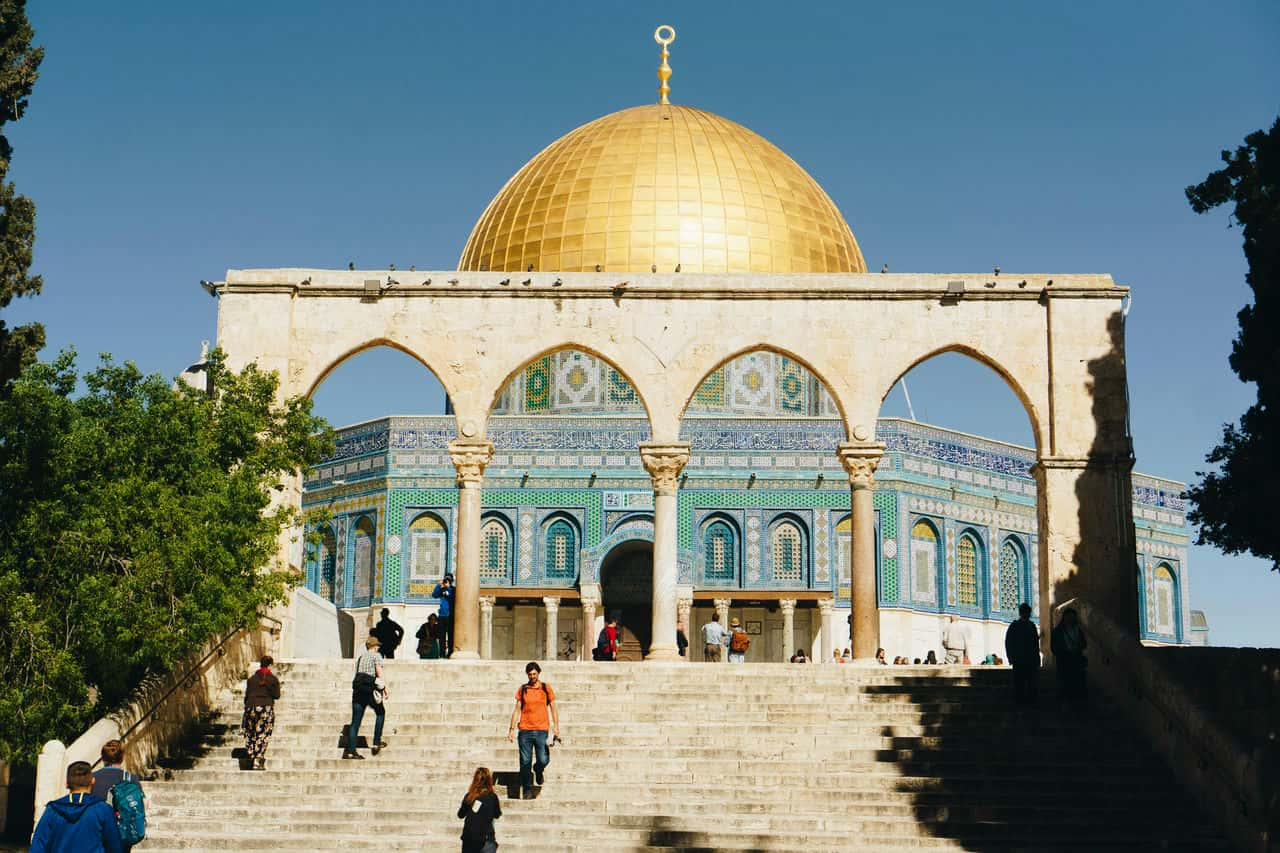
How has the Dome of the Rock influenced the design of other buildings in Israel?
The Dome of the Rock influenced the design of other buildings in Israel in 4 ways. Firstly, the distinctive octagonal shape of the Dome of the Rock has been emulated in the design of several buildings in Israel. The octagonal form, with its symmetrical layout and central focal point, has been adopted in the construction of mosques, mausoleums, and religious structures across the country. Secondly, the intricate mosaics and decorative motifs seen in the Dome of the Rock have influenced the design of other buildings in Israel. The use of geometric patterns, floral designs, and calligraphy inspired by Islamic and Byzantine traditions can be observed in the ornamentation of various regional structures. Thirdly, the symbolic and religious significance of the Dome of the Rock has also influenced the design of religious buildings in Israel. The use of domes, elevated platforms, and open courtyards reminiscent of the Dome of the Rock can be found in the construction of mosques and other sacred spaces. Lastly, the Dome of the Rock’s architectural and historical prominence has made it a source of inspiration for various cultural and public buildings in Israel. Elements such as arches, arcades, and local stone materials have been integrated into the design of museums, government buildings, and public spaces.
What purpose does the Dome of the Rock serve, and how does the design help?
The Dome of the Rock is not a mosque but rather a shrine and a commemorative structure built on the Temple Mount in Jerusalem. The primary purpose of the Dome of the Rock is to mark the spot believed to be the site of Prophet Muhammad’s ascension to heaven, as mentioned in Islamic tradition. The design of the Dome of the Rock contributes to its purpose by creating a visually striking and iconic structure that embodies Islamic architectural traditions. The octagonal shape of the dome, reminiscent of Byzantine influence, and the intricate mosaics and inscriptions on its interior and exterior walls emphasize the site’s religious and spiritual nature. The use of geometric patterns, calligraphy, and decorative motifs further enhances its symbolic significance, creating a sense of awe and reverence for worshippers and visitors. The Dome of the Rock’s elevated position and distinctive golden dome make it a prominent landmark visible from various parts of Jerusalem. The visibility helps guide and attract visitors to the site, reinforcing its significance and ensuring its accessibility. The open courtyard surrounding the shrine provides a gathering space for worshippers and facilitates communal prayer and religious ceremonies.
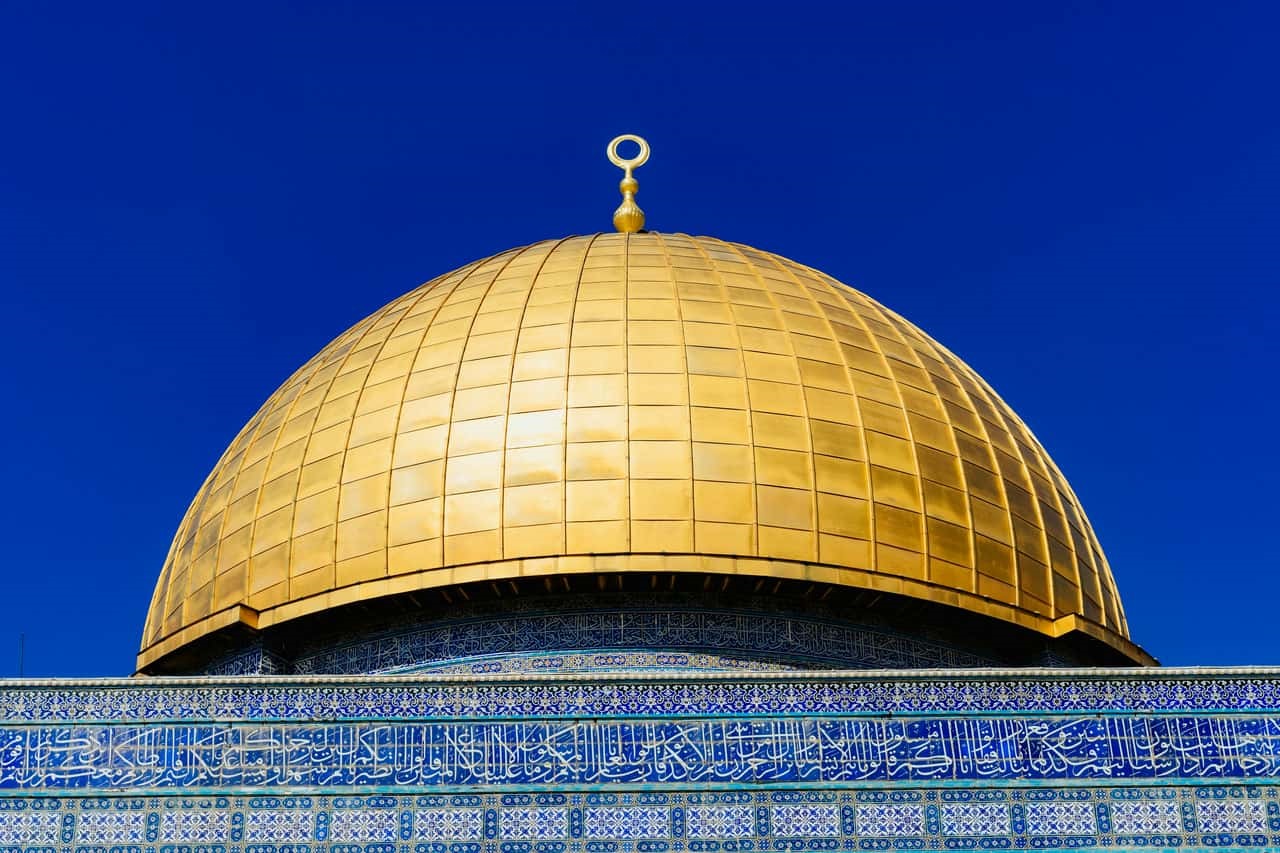
How is the Dome of the Rock maintained?
The maintenance of the Dome of the Rock is carried out through a combination of regular upkeep, restoration projects, and ongoing conservation efforts. Routine inspections are conducted by architectural experts and engineers to ensure the structural integrity of the dome. These inspections assess the stability of the building, identify any signs of deterioration or damage, and determine the necessary maintenance measures. Regular cleaning and repairs are undertaken to preserve the masonry, decorative elements, and the dome’s golden exterior. Restoration projects are periodically initiated to address any significant issues or damage that may have occurred over time. These projects involve extensive research, documentation, and meticulous craftsmanship to maintain the historical authenticity of the structure. Specialized teams of conservators and artisans are often employed to restore the intricate mosaics, calligraphy, and other decorative features to their original splendor. Ongoing conservation efforts involve implementing preventive measures to protect the Dome of the Rock from environmental factors and human activity. These measures include the installation of protective barriers, monitoring systems, and climate control systems to regulate temperature and humidity levels within the structure. Educational programs and visitor guidelines are implemented to raise awareness about the importance of preserving the site and to minimize potential damage caused by tourism.
How does the Dome of the Rock reflect cultural and contextual relevance in its design?
The Dome of the Rock reflects cultural and contextual relevance in its design in 4 ways. Firstly, the architectural design of the Dome of the Rock showcases the cultural and historical influences prevalent in the region. The combination of Byzantine, Persian, and Islamic architectural styles and motifs reflects the rich cultural heritage of Jerusalem and the broader Middle East. Secondly, the contextual relevance of the Dome of the Rock is evident in its location on the Temple Mount in Jerusalem, a site sacred to multiple religious traditions. Its construction on this historically significant site holds great religious and symbolic value for Muslims. Thirdly, the inscriptions and decorative elements on the Dome of the Rock reflect the religious and spiritual beliefs associated with the site. The calligraphy, geometric patterns, and Quranic verses on the walls and interior of the dome convey the Islamic faith’s emphasis on the word of God and its connection to the Prophet Muhammad. Lastly, the Dome of the Rock’s design reflects its historical and political context. Its construction during the Umayyad caliphate in the 7th century CE reflects the time’s political aspirations and religious convictions. The dome’s golden exterior and the use of locally sourced materials, such as the pinkish-hued stone, tie it to the region’s architectural traditions and natural landscape.
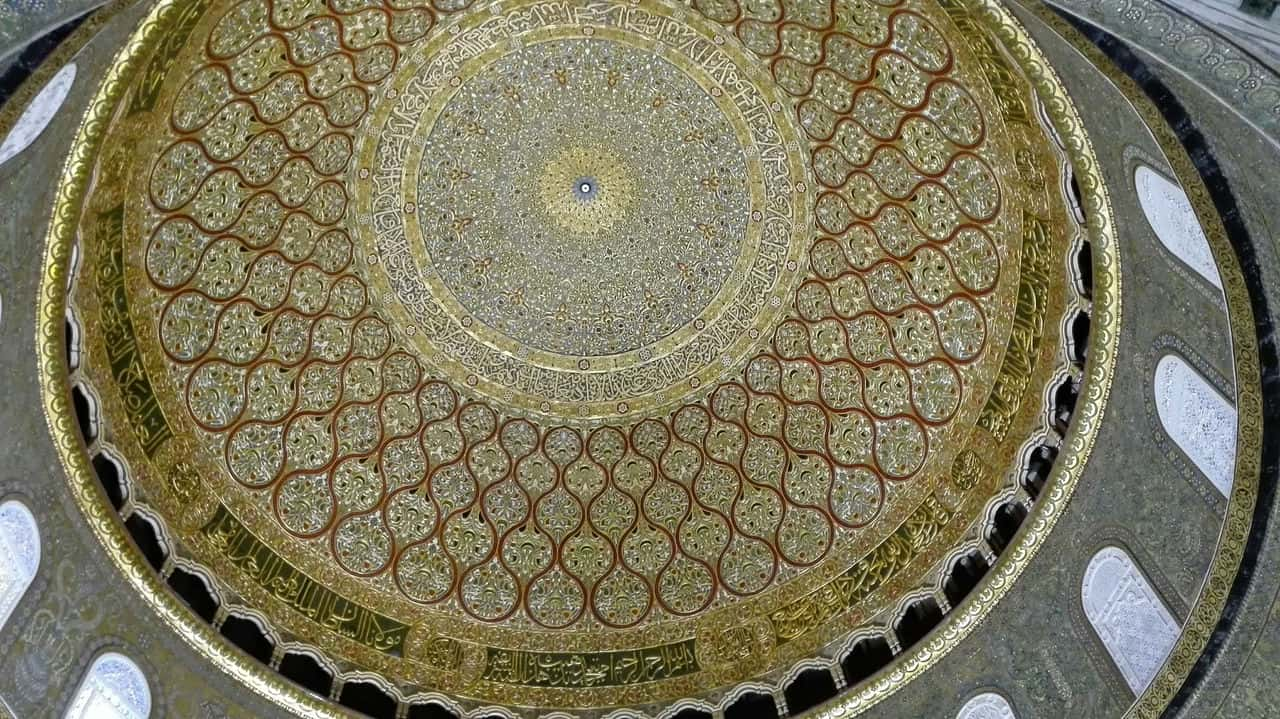
What architectural trend or movement does the Dome of the Rock represent?
The Dome of the Rock represents a unique architecture that draws influence from Byzantine, Persian, and Islamic architectural traditions. It exhibits characteristics of early Islamic architecture, which emerged during the Umayyad caliphate, while the dome’s octagonal shape, derived from Byzantine influence, is not specific to a particular architectural trend, it reflects the continuation of architectural practices from the Byzantine era. The incorporation of intricate mosaics and calligraphy, both inside and outside the dome, showcases the Islamic artistic tradition prevalent during its construction. These decorative elements, featuring geometric patterns and Quranic inscriptions, are hallmarks of Islamic architectural design.
What are the challenges faced during the restoration of the Dome of the Rock?
There are four major challenges faced during the restoration of the Dome of the Rock. Firstly, one of the key challenges faced during the restoration of the Dome of the Rock is preserving its historical authenticity. The structure is an iconic symbol with a rich cultural heritage, and any restoration work must carefully balance the need for repair with the preservation of original materials, techniques, and design elements. It requires extensive research, documentation, and skilled craftsmanship to ensure that the restoration efforts maintain the integrity and historical accuracy of the structure. Secondly, the delicate nature of the Dome of the Rock’s decorative elements poses a significant challenge during restoration. The intricate mosaics, calligraphy, and other ornamental features require meticulous care and expertise to preserve them. The restoration process must involve specialists with the necessary skills and knowledge to clean, repair, and protect these intricate details without causing damage or altering their original aesthetic. Thirdly, the structural stability of the Dome of the Rock presents an ongoing challenge. The building may experience deterioration, cracks, or other structural issues that require attention over time. Addressing these challenges involves conducting thorough assessments, including surveys and inspections by architectural experts and engineers. The restoration process may involve reinforcement, repairs, or even partial reconstruction to ensure the long-term stability and safety of the structure. Lastly, the restoration of the Dome of the Rock also faces challenges related to accessibility, funding, and coordination. The site’s religious and cultural significance necessitates careful planning to minimize disruptions to worship and pilgrimage activities. Securing adequate funding for the restoration projects can be a significant challenge. Coordinating the efforts of various stakeholders, such as religious authorities, preservation organizations, and government agencies, is crucial to ensure effective collaboration and the successful execution of restoration initiatives.
How does the Dome of the Rock comply with contemporary safety and accessibility standards?
The Dome of the Rock complies with contemporary safety and accessibility standards in 4 ways. Firstly, measures have been taken to enhance safety within the structure. Fire prevention systems, including smoke detectors, fire extinguishers, and evacuation plans, are in place to mitigate potential risks. Regular electrical systems and other infrastructure inspections are conducted to ensure compliance with safety regulations. Emergency exits and clear signage are installed to facilitate safe evacuation in emergencies. Secondly, accessibility has been addressed to accommodate a diverse range of visitors. Ramps and pathways have been constructed to provide wheelchair access to certain areas of the site. The installation of handrails and guardrails enhances safety and assists individuals with mobility challenges. Signage and information materials are available in multiple languages to facilitate communication and understanding for international visitors. Thirdly, the Dome of the Rock has implemented security measures to ensure visitors’ safety and the site’s preservation, including security personnel and surveillance systems to monitor and respond to potential security threats. Baggage screening and metal detectors may be utilized to maintain a secure environment. These measures balance safeguarding the site and maintaining a welcoming visitor atmosphere. Lastly, efforts have been made to provide visitor amenities and facilities. Restrooms, seating areas, and shaded spaces are available to enhance visitor comfort. Information centers and guided tours offer educational resources and insights into the historical and cultural significance of the Dome of the Rock. These amenities and services contribute to a positive visitor experience while ensuring compliance with contemporary standards.
Are there any specific tours for architects or architecture enthusiasts to visit the Dome of the Rock?
Yes, there are specific tours for architects or architecture enthusiasts to visit the Dome of the Rock. Viator offers a variety of tours that include the Dome of the Rock, such as the Jerusalem Half-Day Tour: Holy Sepulchre and Western Wall, the Jerusalem Temple Mount & Dome of the Rock from Tel Aviv, and the Jerusalem Half-Day Tour from Tel Aviv: Holy Sepulchre and Western Wall. These tours range from 4 to 10 hours and cost between $57 (€51.87, £49.59) and $114 (€103.74, £99.18) per person. They provide an opportunity to explore the history and architecture of the Dome of the Rock and other religious sites in Jerusalem. Hop A Tour offers a live virtual tour of the Temple Mount and the Dome of the Rock, led by a local guide. The tour lasts 1 hour and costs $17 (€15.47, £14.79) per device. It allows the participants to see the Dome of the Rock and its interior, learn about the Islamic and Jewish traditions associated with the site, and ask questions to the guide. The tour is available on selected dates and times and requires a stable internet connection.
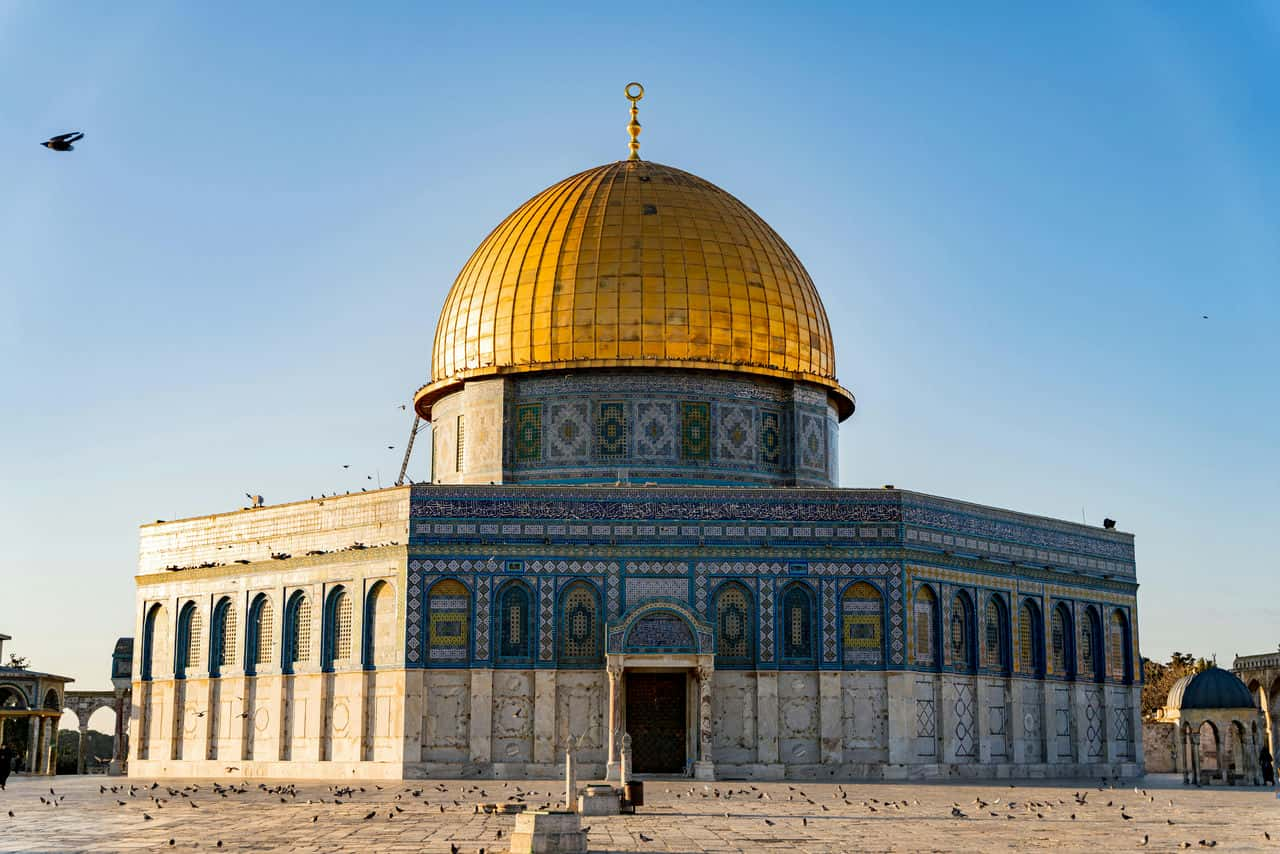
What lessons can architects learn from the design and construction of the Dome of the Rock?
There are four lessons that architects can learn from the design and construction of the Dome of the Rock. Firstly, architects can learn from the Dome of the Rock’s successful integration of various architectural styles and influences. The structure’s blend of Byzantine, Persian, and Islamic elements demonstrates the potential for harmonious fusion within a single architectural composition. It reminds architects of the power of cross-cultural exchange and the ability to create unique designs that reflect diverse influences. Secondly, the Dome of the Rock emphasizes incorporating cultural and religious symbolism into architectural design. The use of intricate mosaics, calligraphy, and Quranic inscriptions not only showcases the artistic mastery of the time but also serves as a visual representation of the structure’s spiritual significance. Architects can take inspiration from the approach, considering how symbolism and cultural references can be integrated into their designs to create meaningful and impactful spaces. Thirdly, the Dome of the Rock’s emphasis on craftsmanship underscores the value of meticulous attention to detail. The intricate stonework, mosaics, and wood carvings exemplify the mastery of skilled artisans who dedicated themselves to achieving excellence. It reminds architects of the importance of craftsmanship in realizing their vision, emphasizing precision, material selection, and using traditional or innovative techniques to create high-quality architectural works. Lastly, the Dome of the Rock’s enduring significance highlights the importance of designing structures that can withstand the test of time. Despite being over a millennium old, the Dome of the Rock stands as a testament to the durability and longevity of its construction. Architects can draw lessons by considering durable materials, thoughtful structural design, and sustainable practices to create buildings that can endure and retain their relevance for future generations.
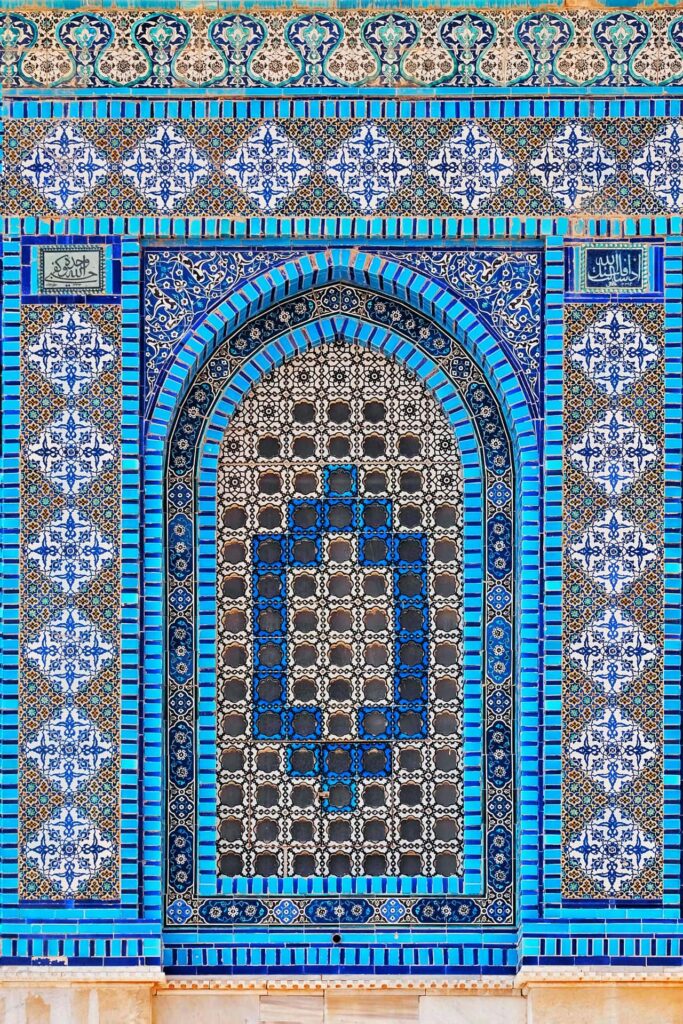
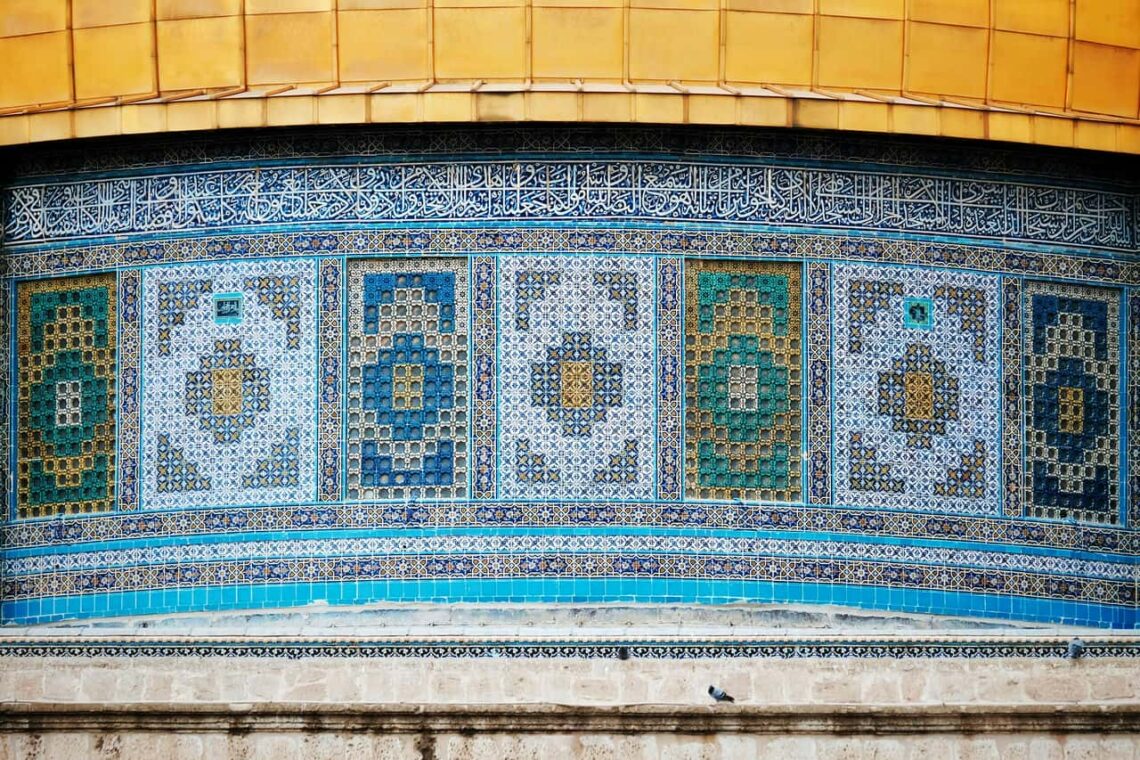
What are the best architectural landmarks to visit as an architect?
Listed below are the best architectural landmarks to visit as an architect:
- Sagrada Familia: The Sagrada Familia is an iconic basilica located in Barcelona, Spain. Designed by popular architect Antoni Gaudí, it is known for its unique and intricate architectural style that combines Gothic and Art Nouveau influences. The basilica has been under construction since 1882 and is still ongoing, making it a fascinating example of long-term architectural vision and dedication. Visitors can admire the stunning facades, soaring towers, and intricate details that make the Sagrada Familia a must-visit landmark for architects and enthusiasts alike.
- Taj Mahal: The Taj Mahal is a UNESCO World Heritage site in Agra, India. Built in the 17th century by Emperor Shah Jahan as a mausoleum for his beloved wife, it is considered one of the most beautiful examples of Mughal architecture. The Taj Mahal features intricate marble inlay work, symmetrical design elements, and a stunning white marble exterior. Its harmonious proportions and elegant details make it a masterpiece of architectural craftsmanship, attracting millions of visitors annually.
- Sydney Opera House: The Sydney Opera House is an iconic performing arts center in Sydney, Australia. Designed by Danish architect Jørn Utzon, it is known for its distinctive sail-like roof structure. The complex houses multiple performance venues and symbolizes modern expressionist architecture. Its innovative design and engineering challenges make it a significant landmark in architectural history. Visitors can take guided tours to explore the interior spaces and learn about the architectural concepts behind this world-famous structure.
- Guggenheim Museum Bilbao: The Guggenheim Museum Bilbao is a contemporary art museum in Bilbao, Spain. Designed by architect Frank Gehry, it is recognized for its striking, curvilinear form and titanium-clad exterior. The museum’s unconventional design pushes the boundaries of traditional architecture, creating a visually captivating and highly acclaimed landmark. Inside, visitors can experience a diverse collection of modern and contemporary art. The Guggenheim Museum Bilbao has revitalized the city, symbolizing urban regeneration through architecture.
- Fallingwater: Fallingwater is a residential house located in Mill Run, Pennsylvania. Designed by architect Frank Lloyd Wright, it is an iconic example of organic architecture that integrates seamlessly with its natural surroundings. The house is built over a waterfall and features cantilevered balconies and open spaces that blur the boundaries between indoors and outdoors. Fallingwater showcases Wright’s principles of harmony between architecture and nature, making it a significant landmark for architects interested in sustainable design.
- St. Peter’s Basilica: St. Peter’s Basilica is a major basilica in Vatican City, Rome. Designed by known architects, including Michelangelo and Gian Lorenzo Bernini, it is the largest church in the world and a masterpiece of Renaissance and Baroque architecture. The basilica’s grandeur is evident in its vast dome, intricate mosaics, and numerous works of art. Architects can appreciate the meticulous detailing and craftsmanship that went into creating this architectural marvel. Visitors can explore the interior, including the famous St. Peter’s Square, and marvel at its architectural and artistic splendor.
- The Louvre: The Louvre is a world-known art museum in Paris, France. Originally a medieval fortress, it was transformed into a grand palace and later became a museum. The Louvre is celebrated for its iconic glass pyramid entrance, designed by architect I.M. Pei. The museum houses an extensive collection of art and historical artifacts, including famous works such as the Mona Lisa. Architects can appreciate the museum’s architectural evolution, from its historic roots to the modern additions that have transformed it into a cultural landmark.
- Burj Khalifa: The Burj Khalifa is a skyscraper in Dubai, United Arab Emirates. Designed by the architectural firm Skidmore, Owings & Merrill, it is the tallest building in the world, standing at 2,717 feet (828 meters). The Burj Khalifa’s sleek and futuristic design features a stepped silhouette and a reflective glass facade. Its engineering marvels, such as the advanced structural systems and high-speed elevators, make it an impressive landmark for architects interested in tall building design. Visitors can enjoy panoramic views of Dubai from the observation decks on the upper floors.
- The Parthenon: The Parthenon is an ancient temple atop the Acropolis hill in Athens, Greece. Built in the 5th century BCE, it symbolizes classical Greek architecture and is one of the most influential buildings in Western history. The Parthenon showcases the Doric order with its iconic columns and pediments adorned with marble sculptures. Its harmonious proportions and refined architectural details demonstrate the principles of balance and symmetry. Architects can study the Parthenon’s design to understand the foundations of classical architecture and its enduring impact on architectural aesthetics.
- The Great Wall of China: The Great Wall of China is an ancient fortification that stretches across northern China. It is an architectural marvel and a UNESCO World Heritage site built over centuries. The wall showcases various construction techniques, including brick, stone, and rammed earth. Its strategic design incorporates watchtowers, battlements, and defensive features. The Great Wall’s vast scale and historical significance make it a remarkable landmark for architects interested in the intersection of architecture and military engineering. Visitors can explore different sections of the wall and admire the panoramic views of the surrounding landscapes.


